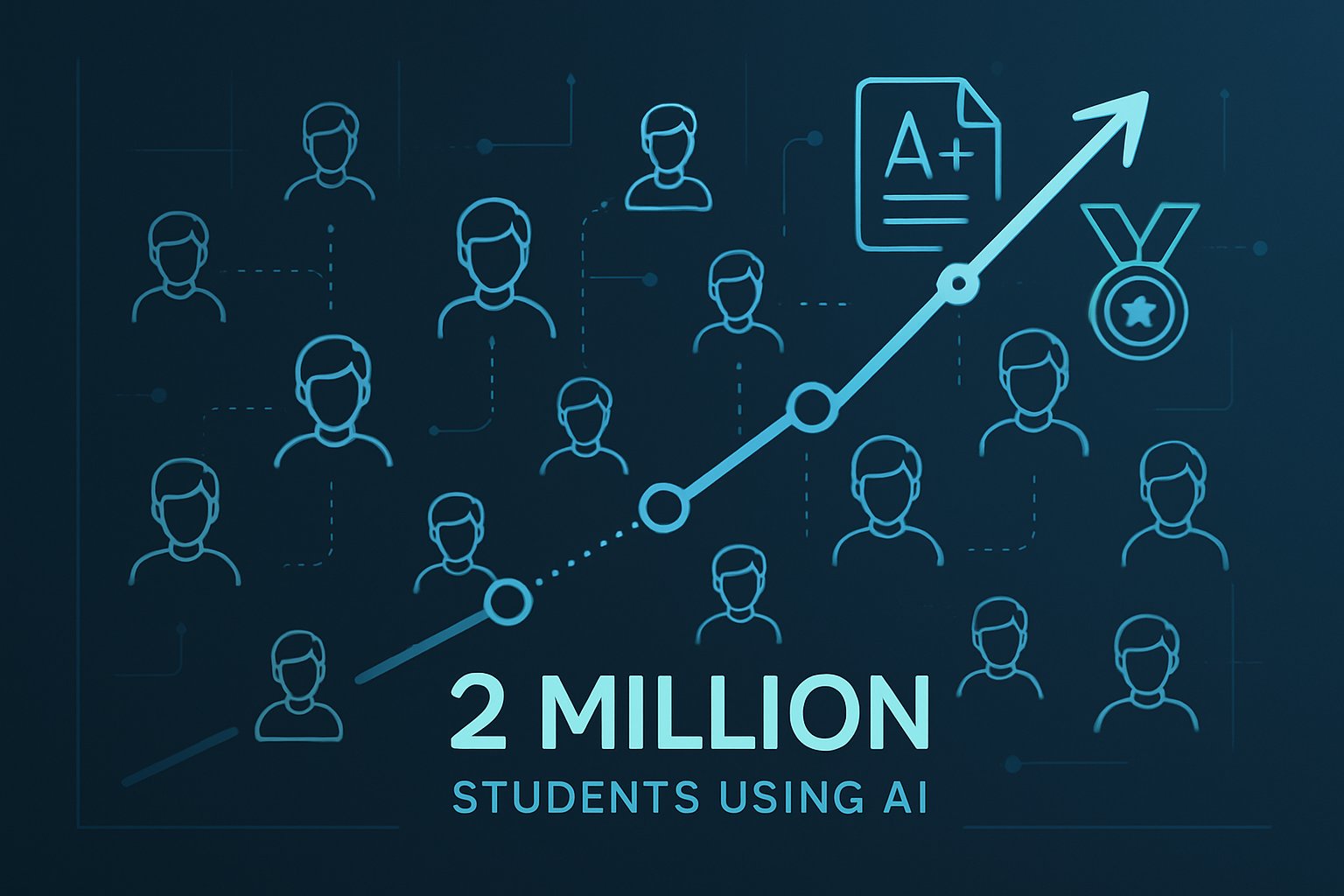
AI CERTS
2 days ago
Educational AI Elevates Two Million Learners
This article examines the evidence, critical caveats, and future directions. Moreover, it spotlights how Educational AI intersects with Personalized Learning, teacher workflows, and broader EdTech economics.
Adaptive Learning Market Surge
Adaptive platforms moved from pilot status to mainstream adoption within three years. DreamBox now serves up to six million students, while Amira supports about two million. Furthermore, Houghton Mifflin Harcourt integrated NWEA assessments to expand adaptive reach across K-8 classrooms. Analysts forecast high single-digit growth for the broader EdTech personalization segment through 2028. In contrast, traditional textbook markets remain flat. Vendors argue that Educational AI lowers per-student tutoring costs, attracting budget-constrained states like Louisiana. Additionally, venture capital continues backing firms that tie personalized analytics to measurable growth.

Market momentum highlights strong demand. However, evidence must verify that scale equals quality.
Therefore, the next section reviews student outcome data.
Evidence Behind Student Gains
Multiple studies connect regular product use to performance lifts. MAP Accelerator users logging thirty minutes weekly achieved nineteen percent higher math gains. Likewise, DreamBox reported five percentile-point jumps after eight weeks of five lessons per week. Moreover, Amira cites effect sizes near 0.45 in several state evaluations.
- Amira: 2M users; ≥30 minutes weekly linked to above-average reading growth.
- DreamBox: 5–6M users; five lessons weekly correlated with five percentile-point rises.
- MAP Accelerator: 180K-plus sample; thirty minutes weekly produced nineteen percent extra math gains.
Providers emphasise dosage as the pivotal lever. Nevertheless, most studies originate from vendor teams or affiliated researchers. Independent randomized trials remain uncommon, limiting definitive claims about Educational AI impact.
The data suggest promise. Yet, dosage and implementation realities decide whether gains materialize.
Consequently, we now explore those operational factors.
Dosage And Implementation Realities
Across platforms, thirty minutes weekly appears the magic number. However, district usage logs reveal many students fall short. Kevin Huffman notes programs help only if students complete sessions. Additionally, deployment models influence fidelity. Hybrid rotations, where teachers monitor progress, outperform unsupervised lab schedules.
Implementation success also hinges on integration with existing assessments. Therefore, HMH paired MAP Growth data with adaptive lessons, reducing teacher setup time. Moreover, dashboards must present actionable insights, or busy educators ignore them. EdTech teams that provide on-site coaching often see higher adherence rates.
Regular practice drives measurable gains. Still, sustainable routines require thoughtful scheduling and educator buy-in.
Hence, hybrid human support becomes essential, as the following section explains.
Hybrid Human AI Models
Teachers add context that algorithms cannot replicate. Consequently, many vendors now promote “human-in-the-loop” frameworks. Khan Academy encourages instructors to use MAP Accelerator recommendations for small-group instruction. Likewise, DreamBox offers lesson guides that align with district pacing calendars. Moreover, research reviews show motivation improves when students receive real-time feedback from adults alongside Educational AI suggestions.
This blended strategy mitigates common equity concerns. In contrast, purely autonomous systems may widen engagement gaps because self-regulated learners benefit more. Additionally, hybrid approaches let educators address misconceptions that automated hints miss.
Human facilitation sustains engagement and equity. Nevertheless, ethical and evidence gaps still challenge widespread adoption.
Therefore, the next section addresses these unresolved issues.
Ethics And Evidence Gaps
Scholars warn that many impact reports lack transparent methods. Furthermore, meta-analyses call for pre-registered trials and open data. Algorithmic bias also demands scrutiny because opaque models can misclassify skill levels for multilingual learners. In contrast, clear data governance can boost trust among districts considering Educational AI contracts. Privacy regulations add further complexity; vendors must detail retention and sharing practices.
Independent evaluations remain limited. Nevertheless, some state ESSA studies on Amira and DreamBox provide encouraging third-party evidence. Additionally, cost-benefit analyses comparing AI tutors with certified human tutors are scarce. Policymakers therefore struggle to gauge long-term return on investment.
Robust ethics frameworks and randomized trials will strengthen confidence. However, market growth continues while researchers catch up.
Subsequently, we consider forward-looking recommendations.
Future Outlook And Recommendations
Industry momentum suggests adaptive tutoring will remain central to Personalized Learning plans. Consequently, districts should combine clear usage goals with teacher professional development. Leaders must also demand transparent reporting from vendors, including effect sizes, usage adherence, and attrition rates. Moreover, partnerships with universities can facilitate rigorous independent studies.
Professionals can enhance their expertise with the AI Educator™ certification. The program covers algorithm fundamentals, ethical safeguards, and implementation strategies. Additionally, educators planning EdTech rollouts gain practical templates for data dashboards and stakeholder communication.
Strategic planning, ethical oversight, and skilled personnel will maximize Educational AI benefits. Consequently, districts can translate promising research into lasting gains.
The article now synthesizes key points and offers a closing call to action.
Conclusion And Call
Adaptive platforms powered by Educational AI already influence millions, showing measurable gains when implemented with fidelity. Furthermore, thirty-minute weekly thresholds and hybrid instructional models emerge as consistent success factors. Nevertheless, evidence gaps, privacy concerns, and equity issues require vigilant oversight. Policymakers, researchers, and practitioners must collaborate on transparent studies and ethical standards. Moreover, ongoing professional development remains critical.
Readers seeking to lead responsible Personalized Learning initiatives should pursue advanced credentials. Therefore, explore the linked AI Educator™ certification and stay informed on evolving EdTech best practices.



